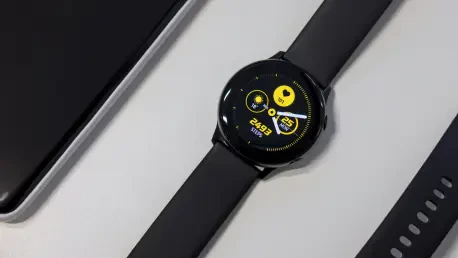In the world of smartwatches, two names currently stand out: the Google Pixel Watch 3 and the Garmin Venu 3. Both have carved distinct niches with their impressive design and feature sets. We’re joined by Simon Glairy, an expert in smart technology, who will guide us through the key differences and help shed light on what makes each of these devices unique.
Can you describe the main differences between the Google Pixel Watch 3 and Garmin Venu 3 in terms of compatibility with smartphones?
The Google Pixel Watch 3 is designed specifically for Android users, offering tight integration with the Android ecosystem. This means features like Google Assistant, Maps, and Wallet work seamlessly. Conversely, the Garmin Venu 3 provides more versatility in terms of smartphone compatibility, working well with both Android and iOS devices, making it more accessible for those who switch between these platforms or are entrenched in the Apple ecosystem.
How does battery life compare between the Google Pixel Watch 3 and Garmin Venu 3?
Battery life is a significant differentiator between these two models. The Garmin Venu 3 excels in this department, offering up to 14 days of battery life under standard use and around 10 days with the always-on display enabled. The Pixel Watch 3, however, provides up to 24 hours for the smaller model, extending to about two days with the larger one if you manage usage carefully. For users seeking longevity, Garmin holds a clear edge.
What are the notable differences in activity tracking features between the two smartwatches?
Both watches offer comprehensive activity tracking, but they do so with different strengths. Garmin’s Venu 3 provides superior GPS performance and a broader array of sports metrics, appealing to athletes who value detailed data analytics. The Pixel Watch 3, leveraging Fitbit integration, provides robust running insights and health metrics but doesn’t quite match Garmin in GPS accuracy or data breadth—making it a better fit for casual users who prioritize running and basic activities.
How does the integration of features like LTE and third-party apps differ between the smartwatches?
The integration of LTE in the Google Pixel Watch 3 allows for more independence from the smartphone, enabling calls, notifications, and app functionalities even when your phone isn’t nearby. Additionally, the Pixel Watch benefits from the extensive app ecosystem of the Google Play Store. Garmin Venu 3, while lacking LTE, offers a respectable range of third-party apps through Garmin Connect IQ, but the variety and depth are not as extensive as what Google offers.
Could you expand on the differences in design, case materials, and display quality between the Google Pixel Watch 3 and Garmin Venu 3?
The Pixel Watch 3 presents a minimalist and modern design with a sleek, domed display made from aluminum, offering a sophisticated yet less durable exterior compared to Garmin’s polymer case for the Venu 3. While Garmin’s choice is more robust, it lacks the premium feel of Google’s offering. In terms of display, the Pixel Watch 3 shines brighter with a 60Hz refresh rate, making interactions a tad smoother, although Garmin’s AMOLED display is quite competitive and dependable.
In what ways do these smartwatches differ in their approach to sports and fitness tracking data?
Garmin is renowned for its detailed sports and fitness tracking, offering precise GPS data and advanced metrics like elevation and VO2 Max. Its dual-band GPS system ensures greater accuracy, appealing to serious athletes and outdoor enthusiasts. The Google Pixel Watch 3, while competent, tends to focus more on everyday fitness activities through its Fitbit integration. It offers detailed running insights and cardio metrics but doesn’t delve as deeply into specialized sports analytics as Garmin does.
What are the key differences in health, stress, and sleep tracking capabilities between the Google Pixel Watch 3 and Garmin Venu 3?
Both watches provide extensive health tracking features—such as ECG, heart rate variability, and blood oxygen levels—but approach stress and sleep tracking differently. Google uses electrodermal activity sensors, offering novel but sometimes inconsistent stress insights. Garmin, with its Body Battery score and stress scale, offers a more reliable, straightforward approach. Sleep tracking is advanced on both, though Garmin might be more appealing to users who appreciate detailed recovery analytics.
How do the smart and safety features vary between the Garmin Venu 3 and the Google Pixel Watch 3?
The Google Pixel Watch 3 offers a richer suite of smart and safety features, like Google Assistant, LTE, offline Google Maps, and an array of safety tools including fall and crash detection. While Garmin provides solid basic smart features, like music playback and payment options, it can’t match Google’s vast ecosystem and detailed safety capabilities, which might be pivotal for those seeking a smartwatch with comprehensive emergency functionalities.
When considering price, how do the options and models compare between these smartwatches?
Price-wise, the Garmin Venu 3 and Pixel Watch 3 are close, but with slight nuances. The Pixel Watch 3’s 41mm model starts at $349, rising with LTE features. The Venu 3 is slightly costlier at the base level, priced at $449, reflecting its enhanced battery life and sports tracking capabilities. The lack of LTE options for Garmin keeps its pricing straightforward but comparable by feature set rather than connectivity.
How would you advise someone to decide between the Google Pixel Watch 3 and Garmin Venu 3 based on their personal needs and priorities?
Choosing between these depends on individual priorities. If long battery life and detailed sports tracking are paramount, Garmin Venu 3 is ideal. It’s an athlete’s companion with its robust data analytics and durable build. On the other hand, if a user seeks integration within the Android ecosystem, along with comprehensive smart features and moderate fitness tracking, the Pixel Watch 3 stands out. Consider your lifestyle needs—whether you’re more focused on day-to-day smart features or intensive activity tracking.
Out of the two smartwatches, which do you believe offers better GPS performance and why?
For all GPS users, Garmin Venu 3 is the superior choice. With its dual-frequency GPS capabilities, it provides exceptional accuracy across terrains, whether urban or rugged, making it perfect for precise distance tracking and navigation during outdoor adventures.
Can you highlight any unique features offered by Garmin Venu 3 that set it apart from the Pixel Watch 3?
Garmin Venu 3 sets itself apart with features like the Body Battery energy monitoring, advanced sports metrics, and extensive outdoor tracking capabilities. Its robust ecosystem for fitness enthusiasts, coupled with impressive battery longevity, positions it as a standout for those who prioritize health and fitness.
Conversely, what are some unique features and advantages of the Google Pixel Watch 3 that might appeal to users?
The Pixel Watch 3 excels with its seamless integration into the Google ecosystem, providing features like Google Assistant, LTE, and a broad array of apps from the Google Play Store. For users who desire advanced smart features and a fully interconnected experience with Android devices, it’s an attractive option.
How do the materials used in the construction of these smartwatches affect their durability and longevity?
Material choices impact both aesthetic appeal and durability. The Pixel Watch 3, with its aluminum case, feels premium but is more prone to wear over time compared to the polymer build of the Garmin Venu 3, which sacrifices some aesthetic appeal for greater resilience against scratches and impacts.
What recommendations do you have for potential buyers of these smartwatches who might be waiting for next-gen models in 2025?
Waiting can be beneficial since future models promise new advancements and possible price drops on existing lines. However, current models are excellent investments today. If your needs are immediate, these deliver robust functionality. Evaluate if current features meet your needs versus potential next-gen enhancements.









